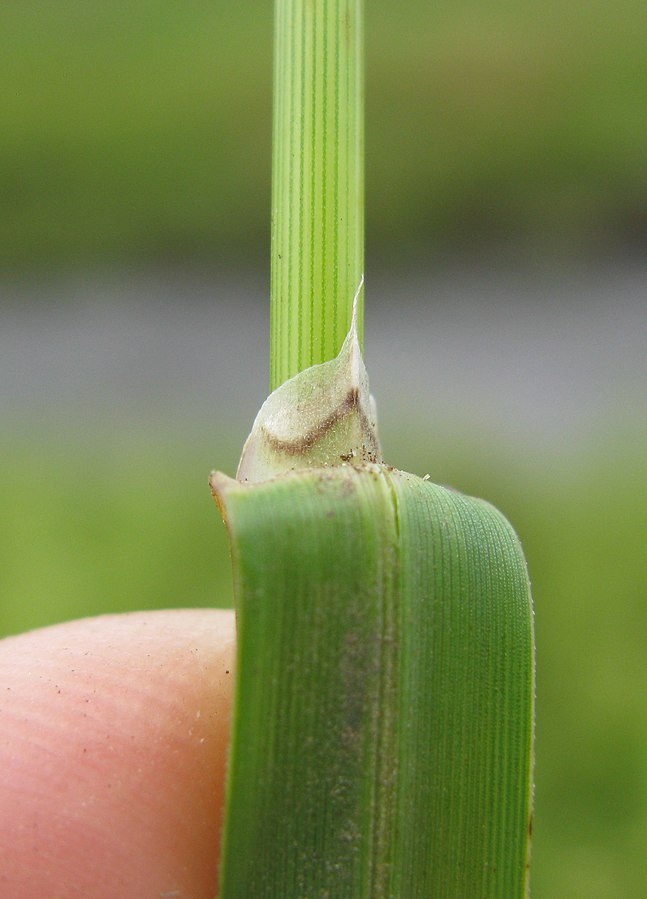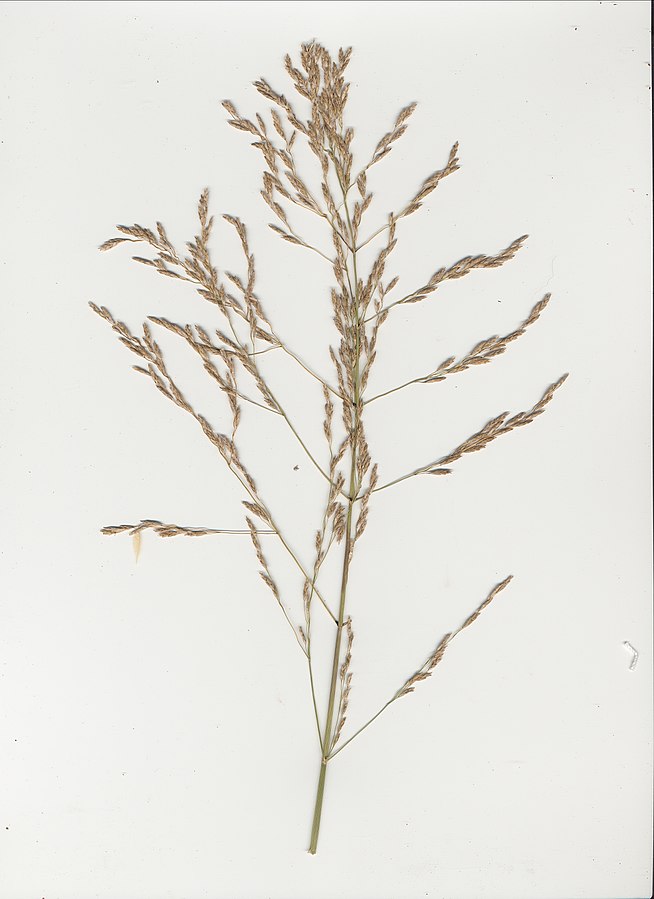Giant Mannagrass

Giant Mannagrass
(Glyceria maxima)
Priority: - Prevent / EDRR
Tags: Aquatic
Identification and Reproduction
Identification:
- Giant mannagrass is a tall aquatic grass that can grow up to 2.5 m tall.
- Stems grow erect, hollow and often reddish on the lower stem.
- Leaves are stiff, rough textured, triangular at base and can reach up to 40 cm long.
- Leaf margins are covered in short stiff hairs.
- When leaf is folded back from stem a translucent ligule is exposed.
- Inflorescence is openly branched and made up of yellow to green spikelets that mature to purple. Flowers are between 10 and 40 cm long.
Reproduction:
- This plant can reproduce vegetatively or by means of seed production.
- Rhizome or root fragments can break and establish new plants.
- Root systems can extend a metre deep and can make up half of the plants biomass.
- It is dormant during the winter and stores energy in its root system. It will send out new shoots during the new growing season.
Habitat & Ecology
- It grows in wet areas and in shorelines that have deep waters up to 2 m deep.
- It thrives in waterlogged soils that have direct sun.
- When bordering deep waters it can form a floating mat that attaches to the bank.
- This grass grows along the edges of lakes, rivers and streams.
Impacts
Ecological:
- Its dense root system can out-compete and suppress native wetland plants.
- Creates a monoculture taking over the wetland.
- It can also alter the ecosystem's food chain by altering wildlife habitat and fish migration patterns.
- Can contain high levels of cyanide that can cause wildlife or cattle poisoning.
- Dense monocultures can block water flow leading to flooding.
Management
Mechanical/Manual:
- Small infestaions can be dug up and removed.
- Dense infestations can be covered by black tarp during the growing season to smother plants.
- To prevent further spread mow and cut prior to seed set. This treatment will need to be repeated at least 3 times in a growing season.
- Treatments will need to be applied for at least 2-3 years to ensure regenerated sprouts are removed.
- Dry plant fragments before disposal.
Resources
King County provides a good resource for identification and control of Glyceria maxima. Note this is a US resource and Canadian guidelines and regulations may differ. Be sure to read product labels carefully.
Header photo (Harry Rose).




